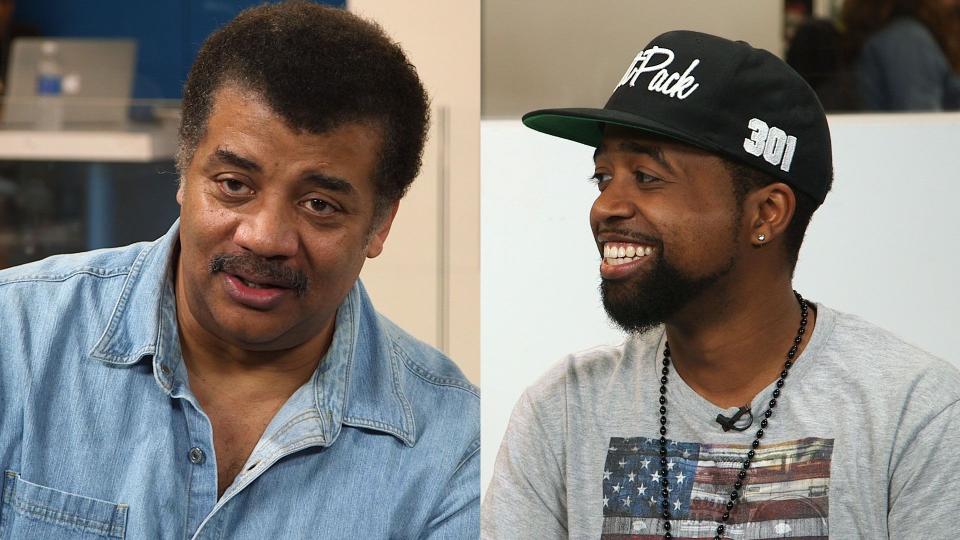Donald Trump's dangerous new low: alt-right vs. alt-left

Donald Trump declared on Tuesday evening that the violence in Charlottesville, Virginia, was not a case of right versus wrong, but rather right versus left.
"What about the alt-left that came charging at—excuse me—what about the alt-left that came charging at the, as you say, the alt-right?" Trump said during an impromptu press conference on Tuesday.
There's a symmetry to how Trump portrayed the scene. You can basic political arithmetic with it. "Alt-right" versus "alt-left" = alt right versus alt left. Same old conflict.
"Very fine people" on both sides, he said, some "very bad people," too.
Trump's use of "alt-right" versus "alt-left" heralds a new low for his presidency, grouping some of the worst elements of American society into a sanitized bubble and juxtaposing them against civil rights activists.
The "Unite The Right" rally drew together a variety of far-right groups over the weekend to a statue of Confederate general Robert E. Lee, which had become a flashpoint due to its scheduled removal. A sizable counter protest formed in response, leading to violence throughout the weekend.
Images of men in tactical gear with assault rifles, Confederate flags, and Nazi salutes told the story of Charlottesville, as did a photo and video of a car being driven through a crowd of counter-protesters, killing one woman and injuring 19 other people.
By Tuesday evening, Trump had succeeded in making that all seem like a big misunderstanding. Trump had lumped neo-Nazis, white supremacists, and a range of other right-wing extremists into "alt-right" and brought the "alt-left" into the mainstream discourse.
"Alt-right" is now a euphemism for seemingly every flavor of fascism and racism in America. "Alt-left" is a right-wing euphemism for anyone willing to oppose those people or organize for civil rights. And just like that, Trump has boiled it all down to familiar D.C. politics of right vs. left, when in reality it is mainstreaming extremism in a way that no modern president has ever done.
This makes it easy to compare Nazis to Black Lives Matter activists without even having to utter the words. In the parlance of "alt-right vs. alt-left," choosing between the two is essentially partisan politics. To stand on either side is to be counted among the extremists as a whole. As historian Kevin Kruse noted, the NAACP was labeled as the extremist counterbalance to the KKK during the 1950s.
The problem for the media is the simplicity and convenience of the language. The term "alt-right" has already become something of a catch all. The "alt-left" may not be far behind.
"At AP, we have taken the position that the term 'alt-right' should be avoided because it is meant as a euphemism to disguise racist aims," wrote John Daniszewski, the vice president of standards for the Associated Press.
The term isn't new. "Alt-left" has been a phrase used by conservatives since late 2016, when it was used by conservative media pundits for the exact same purposes. Sean Hannity on Fox News has been a particular proponent of the term.
Hannity was the first major personality I heard use the term alt-left.
He dines with the president, and now it's a talking point https://t.co/XwzTwZQPbC— Salvador Hernandez (@SalHernandez) August 15, 2017
The term "alt-left" does have some origins among liberals, but its lack of traction highlights that the term was essentially dead before its emergence as a term used by conservatives.
Among the earliest references for an "alternative left" comes from this blog post by freelance journalist Robert Lindsay dated to Aug. 18, 2015. His proposal, which he called "Economically Leftist or liberal (left on economics)... Socially Conservative or at least sane (right on social issues)" would seem to have little in common with what is now being labeled as "alt-left," though Lindsay did propose it as a response to the "alt-right."
Also in early August 2015, a subreddit called /r/AlternativeLeft was started, though it has not found much of an audience.
Its use remained extremely limited, particularly compared to the "alt-right," which emerged as a reasonably well-defined group of young, internet-savvy conservatives who embraced elements of nationalism and white supremacy. Now, Trump is using it as a catchall to avoid words like fascism. That is some good branding.
Google Trend search data shows the popularity of the term "alt-left" versus "alt-right" over the past couple years.

Image: Google Trends/screenshot
With the most extreme views of Trump's supporters sanitized in the "alt-right," the "alt-left" provides a way to then vilify liberal activists. Whatever the "alt-right" does, it would seem to reason that the "alt-left" must have its own version.
Trump allies need the term "alt-left" now more than ever before. Their leader has proven, even under extreme circumstances, he's not particularly interested in distancing himself from the absolute worst America has to offer.
In this case, his defenders have little choice other than offering their "alt-left" equivalency. We'll let Mitt Romney explain why that's wrong:
No, not the same. One side is racist, bigoted, Nazi. The other opposes racism and bigotry. Morally different universes.
— Mitt Romney (@MittRomney) August 16, 2017
WATCH: Neil deGrasse Tyson's nephew drops the mic on cultural appropriation


